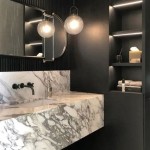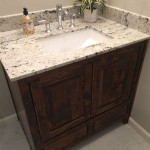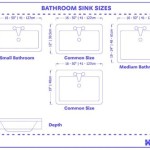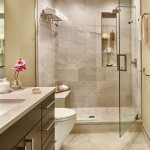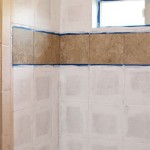Rustic Log Cabin Bathroom Vanity: A Comprehensive Guide
The rustic log cabin aesthetic evokes a sense of warmth, natural beauty, and rugged charm. At the heart of this design style often lies the bathroom, and the vanity plays a crucial role in solidifying the cabin's overall ambience. A rustic log cabin bathroom vanity is more than just a functional fixture; it is a statement piece that reflects the surrounding environment and the homeowner's connection to nature. This article explores various aspects of rustic log cabin bathroom vanities, encompassing their design elements, material considerations, construction techniques, and integration into the overall bathroom aesthetic.
The appeal of rustic design lies in its celebration of imperfections and the inherent beauty of natural materials. Unlike modern, streamlined designs that prioritize sleekness and uniformity, rustic styles embrace the unique characteristics of wood, stone, and metal. Knots, grain patterns, and variations in color are not seen as flaws but as integral parts of the character of each piece. This philosophy extends to rustic log cabin bathroom vanities, where the raw, unrefined nature of the materials contributes to their visual appeal.
Understanding Key Design Elements
Several design elements define the rustic log cabin bathroom vanity. These elements often work in harmony to create a cohesive and visually appealing piece that complements the overall bathroom décor. Recognizing these elements is crucial when selecting or designing a vanity.
One of the defining characteristics is the use of natural materials. Wood, in particular, is a dominant feature, often sourced from local forests or reclaimed from older structures. The type of wood used can vary widely, from knotty pine and cedar to oak and maple, each offering a distinct aesthetic. The wood is typically left relatively unadorned, showcasing its natural grain and texture. Sometimes, the bark is even retained on certain elements to enhance the rustic look.
Another key aspect is the incorporation of hardware that complements the rustic theme. This often includes wrought iron pulls, hammered copper knobs, or even antler handles. These hardware choices not only provide a functional purpose but also contribute to the overall visual appeal. The hardware is often deliberately aged or distressed to create a sense of history and authenticity.
The vanity's overall shape and structure also play a significant role. Many rustic vanities feature simple, clean lines that emphasize the natural beauty of the materials. However, some designs may incorporate more elaborate details, such as hand-carved accents or decorative inlays. The size and configuration of the vanity are also important considerations, taking into account the available space and the homeowner's storage needs. Some vanities may include open shelving, drawers, or a combination of both.
The countertop material is another crucial element to consider. While wood countertops can be used for a truly rustic look, they may require more maintenance and are more susceptible to water damage. As a result, many homeowners opt for stone countertops, such as granite, slate, or marble, which offer both durability and visual appeal. These natural stone options complement the wood elements of the vanity and provide a practical surface for everyday use.
Material Selection for Rustic Log Cabin Vanities
Selecting the appropriate materials is paramount when creating or purchasing a rustic log cabin bathroom vanity. The materials not only influence the aesthetic appeal but also determine the vanity's durability and longevity. Careful consideration should be given to the unique characteristics of each material and its suitability for a bathroom environment.
Wood is undoubtedly the most widely used material in rustic vanities. Different types of wood offer varying degrees of durability, texture, and color. Knotty pine is a popular choice due to its affordability, distinctive knot patterns, and warm tones. Cedar is another excellent option, prized for its natural resistance to moisture and insects, making it ideal for bathroom applications. Oak and maple offer greater durability and a more refined appearance, while reclaimed wood adds a sense of history and environmental responsibility. The choice of wood will ultimately depend on the homeowner's preferences, budget, and the desired aesthetic.
Stone countertops are a common complement to wooden vanity bases. Granite is a highly durable and scratch-resistant option, available in a wide range of colors and patterns. Slate offers a more rustic and textured appearance, while marble provides a touch of elegance and sophistication. Each of these stone options is naturally water-resistant and easy to clean, making them practical choices for a bathroom environment. The selection of the countertop stone should harmonize with the wood tones and the overall color palette of the bathroom.
Metal accents, such as hardware and decorative elements, play a subtle yet important role in the overall design. Wrought iron is a classic choice for rustic designs, offering a robust and timeless appeal. Copper hardware can add warmth and a touch of elegance, while brushed nickel or oil-rubbed bronze provide a more contemporary twist on the rustic theme. The metal finish should complement the wood and stone elements, creating a cohesive and visually appealing design. Consider using reclaimed metal for a more authentic rustic feel.
Other materials can also be incorporated into rustic vanities, such as leather pulls, woven baskets for storage, or even repurposed metal buckets for sinks. These unconventional materials can add unique character and personality to the vanity, making it a true reflection of the homeowner's style.
Construction Techniques and Considerations
The construction techniques employed in creating a rustic log cabin bathroom vanity are often different from those used in modern furniture manufacturing. Emphasis is placed on handcrafted techniques and the preservation of the natural characteristics of the materials. Understanding these techniques can help homeowners appreciate the craftsmanship and quality of their vanities.
Traditional joinery methods, such as mortise and tenon joints, dovetail joints, and lap joints, are commonly used to create strong and durable connections between the wood components. These techniques require skill and precision, resulting in joints that are both aesthetically pleasing and structurally sound. Unlike modern fasteners, such as screws and nails, these traditional joints do not detract from the natural beauty of the wood.
The finishing process is also crucial in preserving the rustic character of the wood. Rather than applying a thick, glossy finish that obscures the natural grain, most rustic vanities are treated with a penetrating oil or a matte sealant. These finishes protect the wood from moisture and damage while allowing the natural beauty of the grain and knots to shine through. Some vanities may also be intentionally distressed or antiqued to create a weathered and aged appearance.
Consideration should also be given to the plumbing and electrical requirements of the vanity. Proper planning is essential to ensure that the vanity can accommodate the selected sink, faucet, and lighting fixtures. Cutouts for plumbing pipes and electrical wiring should be carefully measured and executed to avoid damage to the vanity or the surrounding structures. It is advisable to consult with a qualified plumber and electrician during the design and installation process.
The size and configuration of the vanity must also be carefully considered, taking into account the available space in the bathroom and the homeowner's storage needs. A smaller vanity may be suitable for a powder room or a guest bathroom, while a larger vanity with ample storage space may be necessary for a master bathroom. Consider the height of the vanity as well. Standard vanity heights are typically around 32 to 36 inches, but custom heights can be accommodated to suit individual preferences and needs.
Lastly, the overall weight of the vanity should be considered, especially when installing it in an older home with potentially weaker floor joists. Reinforcements may be necessary to ensure that the floor can adequately support the weight of the vanity and its contents. It is advisable to consult with a structural engineer to assess the structural integrity of the floor before installing a heavy vanity.

26 Impressive Ideas Of Rustic Bathroom Vanity Home Design Lover Bathrooms Cabin Decor Vanities

30 Rustic Bathroom Vanity Ideas That Are On Another Level Vanities Log Home Cabin

Real Cedar Log Cabin Vanity 24 42

31 Impressive Diy Rustic Farmhouse Bathroom Vanity Ideas Log Home Bathrooms Vanities

Cedar Lake Cabin 48 72 Rustic Log Vanity

Rustic Log Cabin Bathroom Vanity From Dutchcrafters Amish Furniture

Gallery Town Country Cedar Homes Rustic Bathroom Designs Cabin Bathrooms

Cedar Lake Solid Wood Rustic Log Vanity 48 72
Five Ideas For Creating The Perfect Log Cabin Bathroom

25 Rustic Bathroom Vanities To Consider
Related Posts
